Quick Info:
MIDI-plant

Scrap Tire Recycling
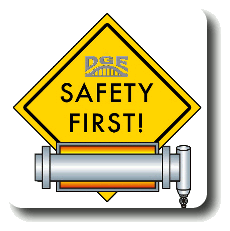
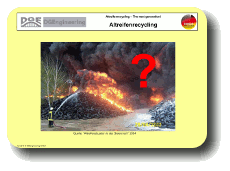
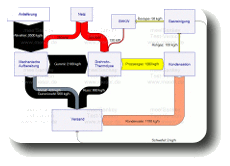
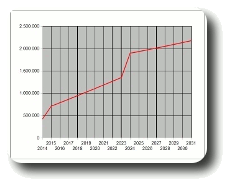


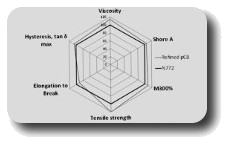
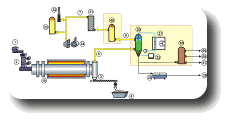

|
 |
 |
 |
 |
|
|
 |
| Dirk Gerlach Engineer
|
|
|
|
|
Processes description cooling
A cooler is a device built for efficient heat transfer from a hot product to another medium, which conducts away the heat or converts the thermal energy into evaporation energy.
Applications
Downstream of the Pyrolysis
Downstream of the pyrolysis kiln the solid residues have to be cooled down in the absence of oxygen, if the remaining chemical bound energy is not used in a further process step like a so-called "Carbon Recovery Unit" (CRU) or a combustion.
This has to be done because of the danger of auto-ignition. Very effective for this application is the utilisation of a spray cooler. Due to the large evaporation energy the amount of consumed water is kept as low as possible.
Downstream of the Calcination
Downstream of the calcination kiln oxides should not be cooled directly by a spray cooler because they could reconvert to carbonates again.
Pipe bundles are required, which are indirectly cooled with water or oil.
Production of Pyrolysis Oil
If the task of pyrolysis is the production of pyrolysis oil, such as frequently required for the treatment of waste tyres, rape-seed, wood, straw or other so-called energy plants, the hot pyrolysis gas has to be cooled down and condensed.
This is managed by direct heat exchange with already obtained pyrolysis oil, which is sprayed via nozzles into the gas stream.
The circular pumped pyrolysis oil is cooled down indirectly by a heat exchanger wich could operate with cooling water.
|
|
|
Dipl.-Ing.(FH) Dirk Gerlach • Passion for Innovation
|
|  |
 |
 |
 |
|
|
A Service of LEO GmbH.
|



















